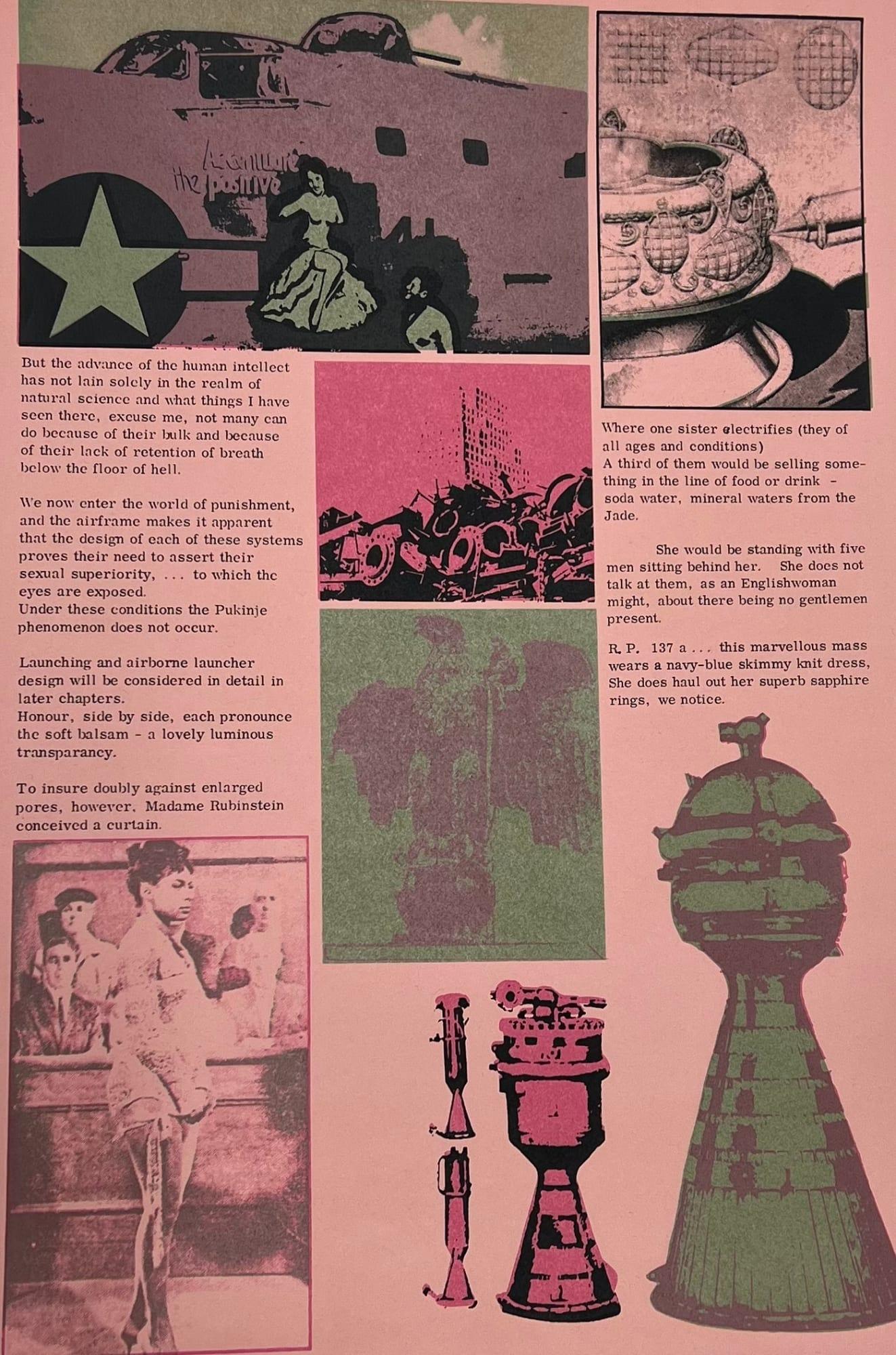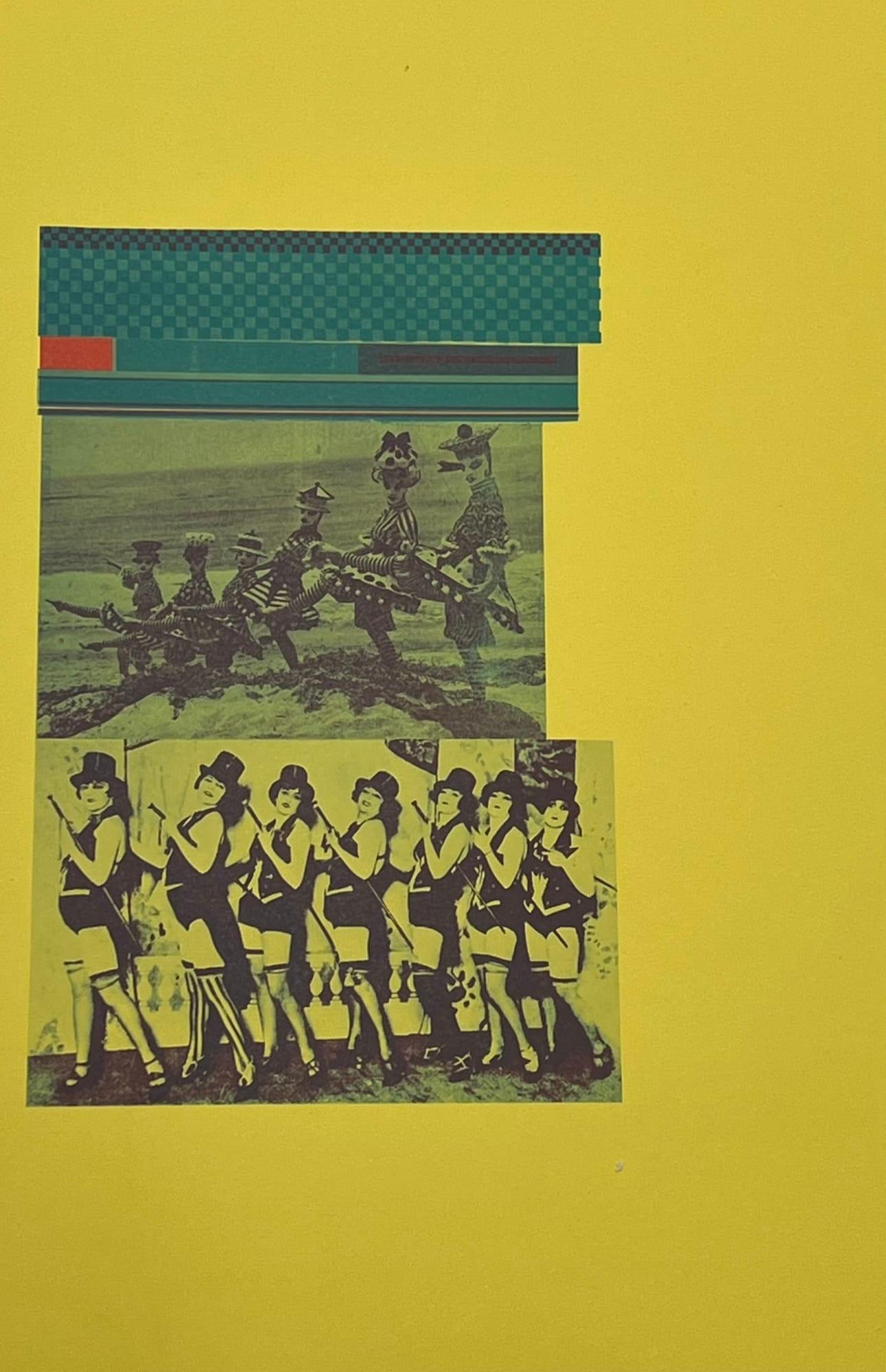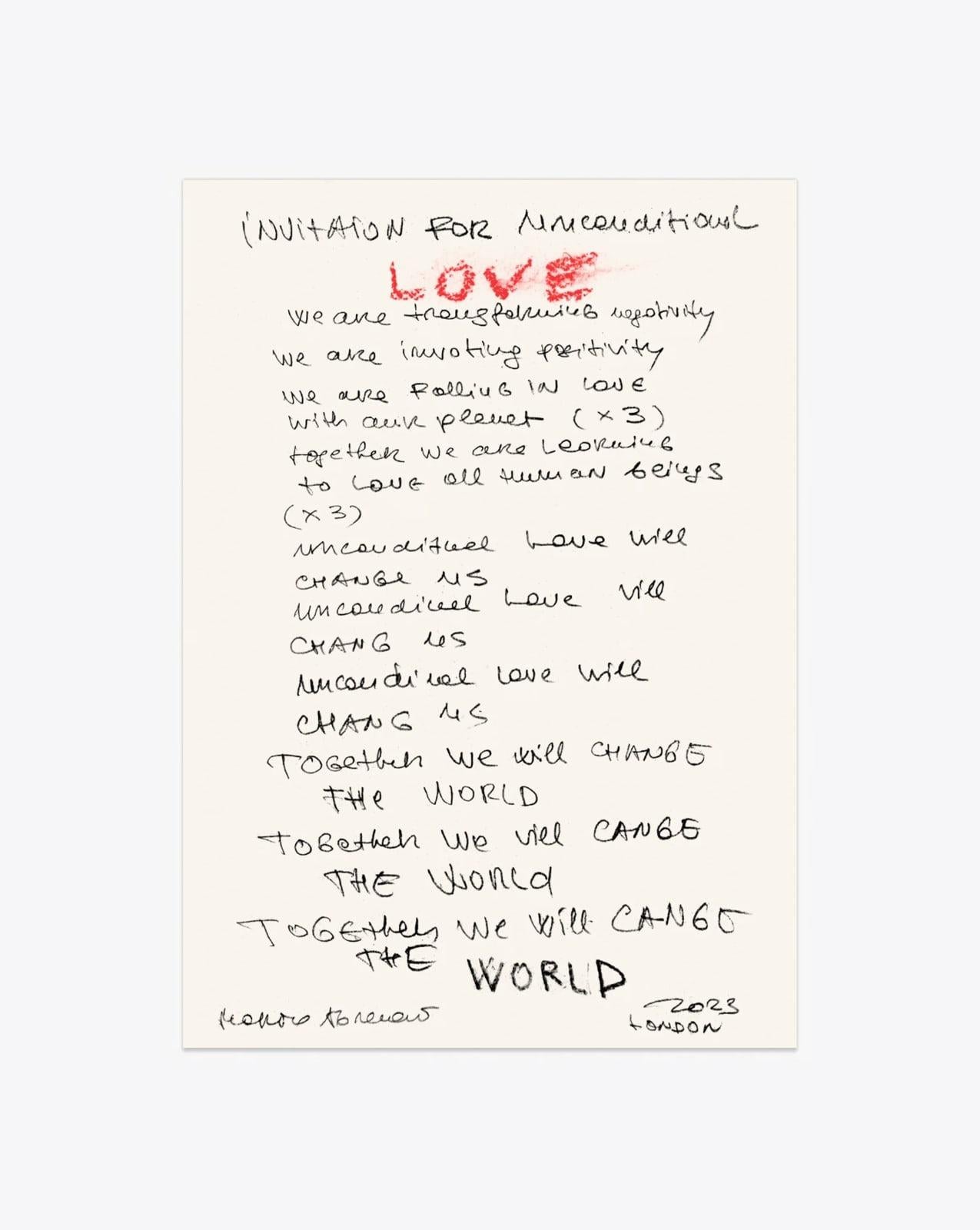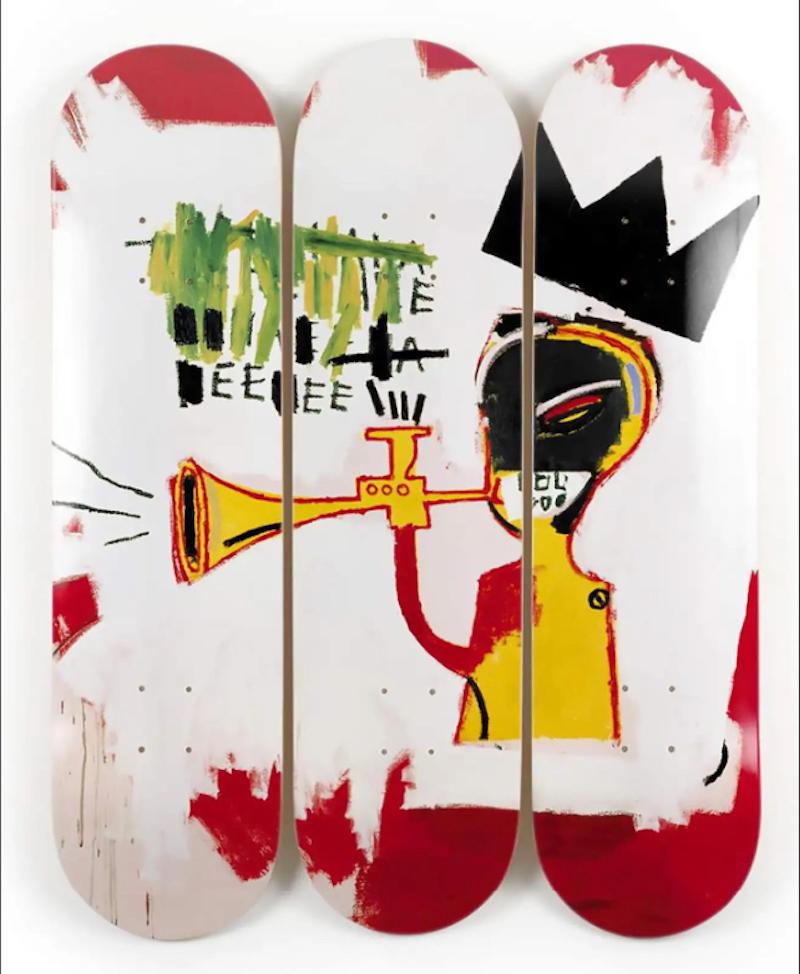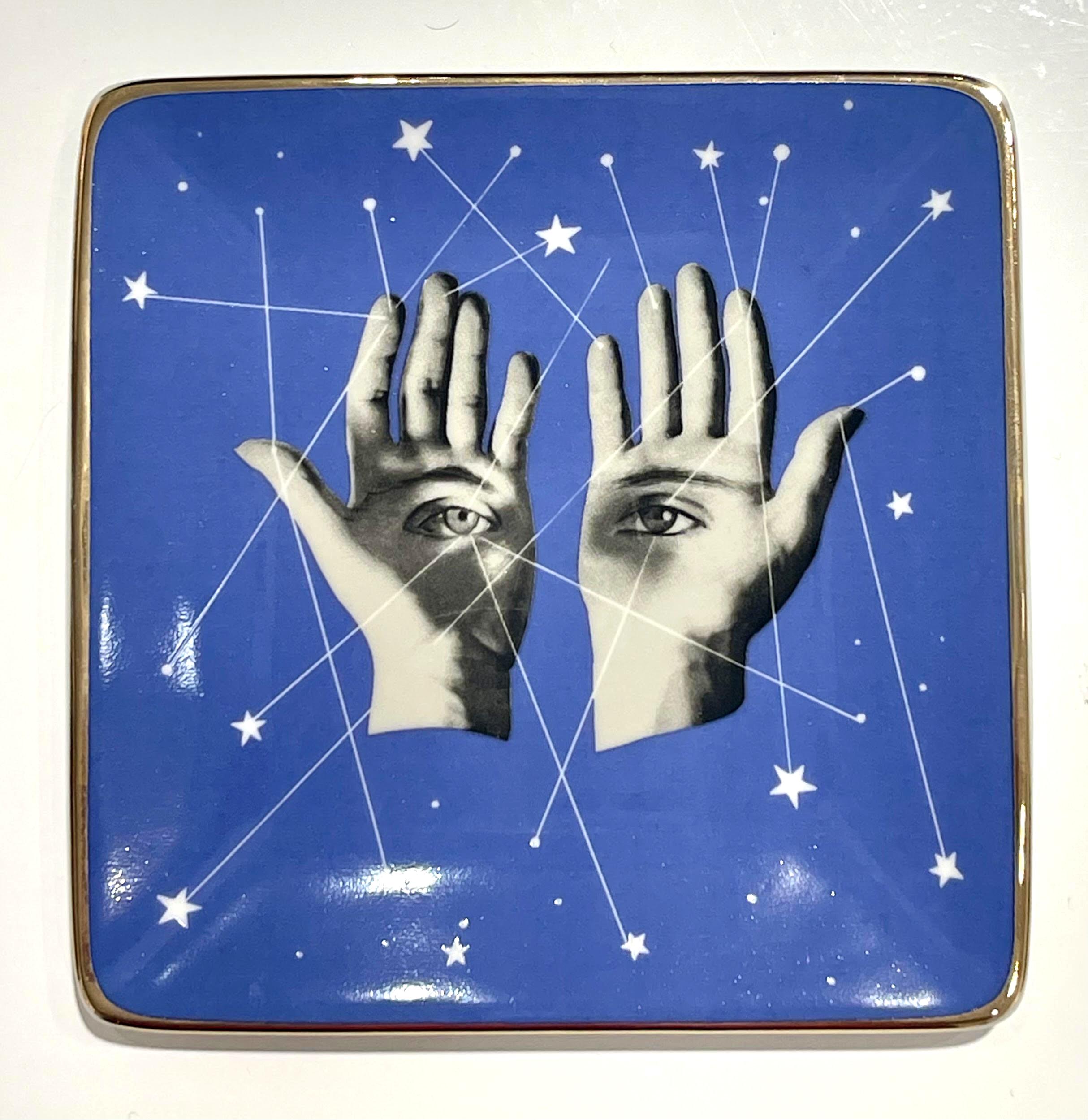Items Similar to Coasts Of Illusion - Moonstrips Empire News By Eduardo Paolozzi
Want more images or videos?
Request additional images or videos from the seller
1 of 13
Eduardo PaolozziCoasts Of Illusion - Moonstrips Empire News By Eduardo Paolozzi1967
1967
About the Item
Coasts Of Illusion - Moonstrips Empire News
By Eduardo Paolozzi
Eduardo Paolozzi (1924-2005) was a pioneering Scottish artist and sculptor associated with the Pop Art movement. Renowned for his collage works, he skillfully blended elements of popular culture, technology, and surrealism, leaving an indelible mark on the art world. Paolozzi's innovative approach and eclectic style continue to influence contemporary artists, reflecting his enduring impact on the evolution of modern art.
1967
Screenprint on paper
38 x 25.4 cm
Edition of 92
Publisher stamp, verso.
- Creator:Eduardo Paolozzi (1924 - 2005, British)
- Creation Year:1967
- Dimensions:Height: 14.97 in (38 cm)Width: 10.01 in (25.4 cm)
- Medium:
- Movement & Style:
- Period:
- Condition:
- Gallery Location:London, GB
- Reference Number:1stDibs: LU1608213904372
About the Seller
5.0
Gold Seller
These expertly vetted sellers are highly rated and consistently exceed customer expectations.
Established in 2018
1stDibs seller since 2021
216 sales on 1stDibs
Typical response time: 1 hour
- ShippingRetrieving quote...Ships From: London, United Kingdom
- Return PolicyA return for this item may be initiated within 14 days of delivery.
More From This SellerView All
- Human Intellect - Moonstrips Empire News 1967 By Eduardo PaolozziBy Eduardo PaolozziLocated in London, GBHuman Intellect - Moonstrips Empire News 1967 By Eduardo Paolozzi Eduardo Paolozzi (1924-2005) was a pioneering Scottish artist and sculptor associated with the Pop Art movement. R...Category
1960s Contemporary Figurative Prints
MaterialsScreen
- Untitled - From General Fun By Eduardo PaolozziBy Eduardo PaolozziLocated in London, GBUntitled - From General Fun By Eduardo Paolozzi Eduardo Paolozzi (1924-2005) was a pioneering Scottish artist and sculptor associated with the Pop Art movement. Renowned for his co...Category
1970s Contemporary Figurative Prints
MaterialsScreen
- Unconditional Love By Marina AbramovićBy Marina AbramovicLocated in London, GBUnconditional Love By Marina Abramović Marina Abramović is a pioneering performance artist renowned for her boundary-pushing work exploring endurance and the human psyche, notably...Category
2010s Contemporary Figurative Prints
MaterialsScreen
- Untitled (Oyster) By Nicolas PartyBy Nicolas PartyLocated in London, GBUntitled (Oyster) By Nicolas Party 2011 Nicholas Party is a contemporary Swiss-born artist celebrated for his distinctive and colorful works encompassing painting, sculpture, and ...Category
21st Century and Contemporary Contemporary Figurative Prints
MaterialsPaper
- Skorpion - Scorpio By A.R. PenckLocated in London, GBSkorpion - Scorpio By A.R. Penck A.R. Penck, born Ralf Winkler in Dresden, Germany, in 1939, was a trailblazing artist who made indelible contributions to the Neo-Expressionist mo...Category
1990s Contemporary Figurative Prints
MaterialsLaid Paper
- Untitled (Moonstrips) By Eduardo PaolozziBy Eduardo PaolozziLocated in London, GBUntitled (Moonstrips), from the General Fun portfolio (1967) By Eduardo Paolozzi Eduardo Paolozzi (1924-2005) was a pioneering Scottish artist and sculptor associated with the Pop ...Category
1960s Contemporary Figurative Prints
MaterialsLithograph, Paper
You May Also Like
- The souper dressBy Andy WarholLocated in Jerusalem, ILA wonderful piece of unknown edition by Andy Warhol. A silkscreen print on a Cellulose and Cotton dress. Fearing the artist's trade mark Campbell's soup can. In very good condition.Category
1960s Pop Art Figurative Prints
MaterialsTextile, Screen
- UntitledBy Jean-Michel BasquiatLocated in New York, NYJean-Michel Basquiat, Untitled, 2014 Screenprints in color on three individual maple wood skate decks With artist's printed signature on verso 31 x 8 in. (78.7 x 20.3 cm), each, unfr...Category
21st Century and Contemporary More Art
MaterialsWood, Screen
- Things to Come trayBy Herbert BayerLocated in New York, NYHerbert Bayer Things to Come tray, 2018 Porcelain dish with metallic gold edge and silkscreened image Limited edition of an unknown quantity, originally distributed by the Museum of Modern Art, before it sold out. Measurements: Box: 5.5 x 5.5 inches Tray: 5 x 5 inches Provenance: Originally distributed by the Museum of Modern Art, before it sold out Manufacturer: Galison Publishing LLC and The Museum of Modern Art Herbert Bayer biography: Artistic polymath Herbert Bayer was one of the Bauhaus’s most influential students, teachers, and proponents, advocating the integration of all arts throughout his career. Bayer began his studies as an architect in 1919 in Darmstadt. From 1921 to 1923 he attended the Bauhaus in Weimar, studying mural painting with Vasily Kandinsky and typography, creating the Universal alphabet, a typeface consisting of only lowercase letters that would become the signature font of the Bauhaus. Bayer returned to the Bauhaus from 1925 to 1928 (moving in 1926 to Dessau, its second location), working as a teacher of advertising, design, and typography, integrating photographs into graphic compositions. He began making his own photographs in 1928, after leaving the Bauhaus; however, in his years as a teacher the school was a fertile ground for the New Vision photography passionately promoted by his close colleague László Moholy-Nagy, Moholy-Nagy’s students, and his Bauhaus publication Malerei, Photographie, Film (Painting, photography, film). Most of Bayer’s photographs come from the decade 1928–38, when he was based in Berlin working as a commercial artist. They represent his broad approach to art, including graphic views of architecture and carefully crafted montages. In 1938 Bayer emigrated to the United States with an invitation from Alfred H. Barr, Jr., founding director of The Museum of Modern Art, to apply his theories of display to the installation of the exhibition Bauhaus: 1919–28 (1938) at MoMA. Bayer developed this role through close collaboration with Edward Steichen, head of the young Department of Photography, designing the show Road to Victory (1942), which would set the course for Steichen’s influential approach to photography exhibition. Bayer remained in America working as a graphic designer for the remainder of his career. -Courtesy of MOMA More about Herbert Bayer: Herbert Bayer (1900-1985) was born in Austria, where he entered into an apprenticeship under the architect and designer, Georg Smidthammer, with whom Bayer learned drawing, painting, and architectural drafting, inspired by nature and without formal knowledge of art history. In 1920, Bayer discovered the theoretical writings of the artist Vassily Kandinsky, as well as Walter Gropius’ 1919 Bauhaus manifesto, in which Gropius declared the necessity for a return to crafts, in which were found true creativity and inspiration. Bayer traveled to Weimar to meet Gropius in October of 1921 and was immediately accepted into the Bauhaus. There, he was deeply influenced by the instruction of Kandinsky, Johannes Itten and Paul Klee. In 1928 Bayer moved to Berlin together with several members of the Bauhaus staff including Gropius, Moholy-Nagy and Marcel Breuer. He found work as a freelance graphic designer, particularly with German Vogue, under its art director Agha. When the latter returned to Paris, Bayer joined the staff full time, and also worked increasingly with Dorland, the magazine's principle advertising agency. It was in the period from 1928 to his emigration to America in 1938 that he developed his unique vision as an artist, combining a strongly modernist aesthetic sense with a rare ability to convey meaning clearly and directly. This seamless combination of art, craft and design mark Bayer as true prophet of Bauhaus theories. Bayer followed Gropius to America in 1938, and set his breadth of skills to work later that year in designing the landmark Bauhaus 1918-1928 exhibition at the Museum of Modern Art. Bayer flourished in New York as a designer and architect, but it was his meeting with the industrialist Walter Paepcke in 1946 that allowed him to harness his concepts of 'total design' to the postwar boom. Paepcke was developing Aspen as a cultural and intellectual destination, and found in Bayer the perfect collaborator. Bayer was designer, educator and indeed architect for Paepcke's Aspen Institute...Category
2010s Bauhaus More Art
MaterialsMetal
- Flower Power Print By Shepard Fairey Singed & Numbered Gold Metallic Inks ObeyBy Shepard FaireyLocated in Draper, UTThese Flower Power prints are a symbolic urge for a concerted effort to transition off of fossil fuels and to sustainable energy sources. Life, as we know it on Earth, will depend on...Category
2010s Street Art Figurative Prints
MaterialsGold
- Book Box Una Grande Storia Italiana Valentino Garavani, Hand Signed and NumberedLocated in New York, NYValentino Large: Hand signed and numbered Monograph (gift book) in elegant Clamshell Box Una Grande Storia Italiana Valentino Garavani (Hand Signed and Numbered Collectors Edition),...Category
Early 2000s Contemporary More Art
MaterialsMixed Media, Permanent Marker, Lithograph, Offset, Board
- Monograph: Philip Glass Words Without Music (book hand signed by Philip Glass)Located in New York, NYPhilip Glass Words Without Music (hand signed by Philip Glass), 2015 Hardback monograph with dust jacket (hand signed by Philip Glass) Hand signed by Philip Glass on the half title page 9 1/2 × 6 1/2 × 1 1/4 inches Hand signed by Philip Glass on the half title page. Makes an excellent gift! Book information: Publisher: Liveright Publishing Company, 2015 English; Hardcover; 432 pages; 32 pages of photographs Publisher's blurb: The long-awaited memoir by “the most prolific and popular of all contemporary composers” (New York Times). A world-renowned composer of symphonies, operas, and film scores, Philip Glass has, almost single-handedly, crafted the dominant sound of late-twentieth-century classical music. Yet here in Words Without Music, he creates an entirely new and unexpected voice, that of a born storyteller and an acutely insightful chronicler, whose behind-the-scenes recollections allow readers to experience those moments of creative fusion when life so magically merged with art. "If you go to New York City to study music, you'll end up like your uncle Henry," Glass's mother warned her incautious and curious nineteen-year-old son. It was the early summer of 1956, and Ida Glass was concerned that her precocious Philip, already a graduate of the University of Chicago, would end up an itinerant musician, playing in vaudeville houses and dance halls all over the country, just like his cigar-smoking, bantamweight uncle. One could hardly blame Mrs. Glass for worrying that her teenage son would end up as a musical vagabond after initially failing to get into Juilliard. Yet, the transformation of a young man from budding musical prodigy to world-renowned composer is the story of this commanding memoir. From his childhood in post–World War II Baltimore to his student days in Chicago, at Juilliard, and his first journey to Paris, where he studied under the formidable Nadia Boulanger, Glass movingly recalls his early mentors, while reconstructing the places that helped shape his artistic consciousness. From a life-changing trip to India, where he met with gurus and first learned of Gandhi’s Salt March, to the gritty streets of New York in the 1970s, where the composer returned, working day jobs as a furniture mover, cabbie, and an unlicensed plumber, Glass leads the life of a Parisian bohemian artist, only now transported to late-twentieth-century America. Yet even after Glass’s talent was first widely recognized with the sensational premiere of Einstein on the Beach...Category
2010s Contemporary Figurative Prints
MaterialsPaper, Offset, Lithograph, Mixed Media, Ink
